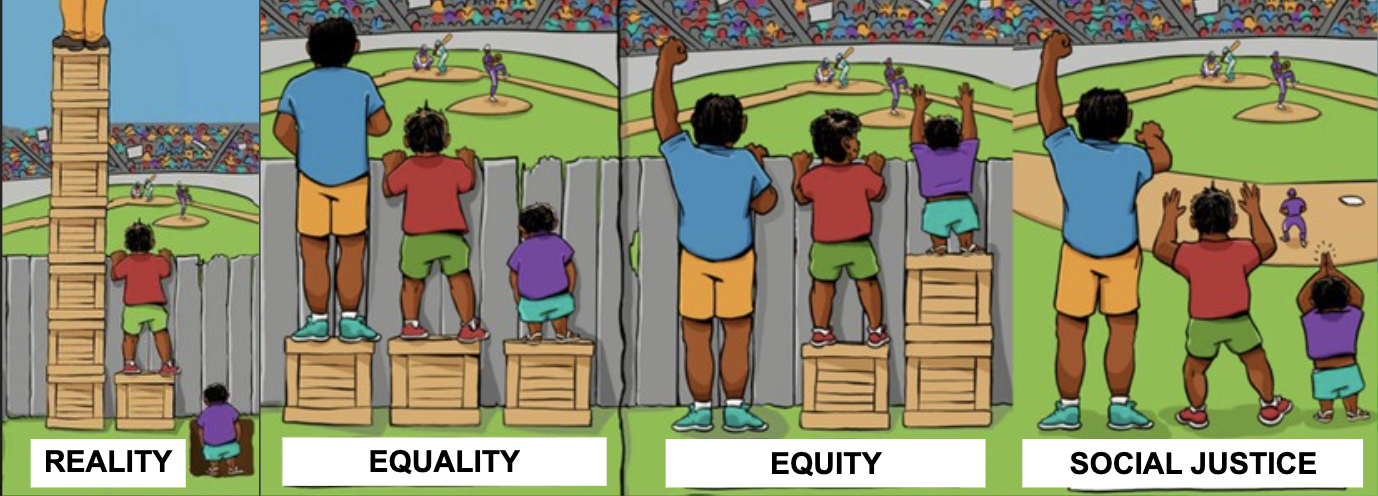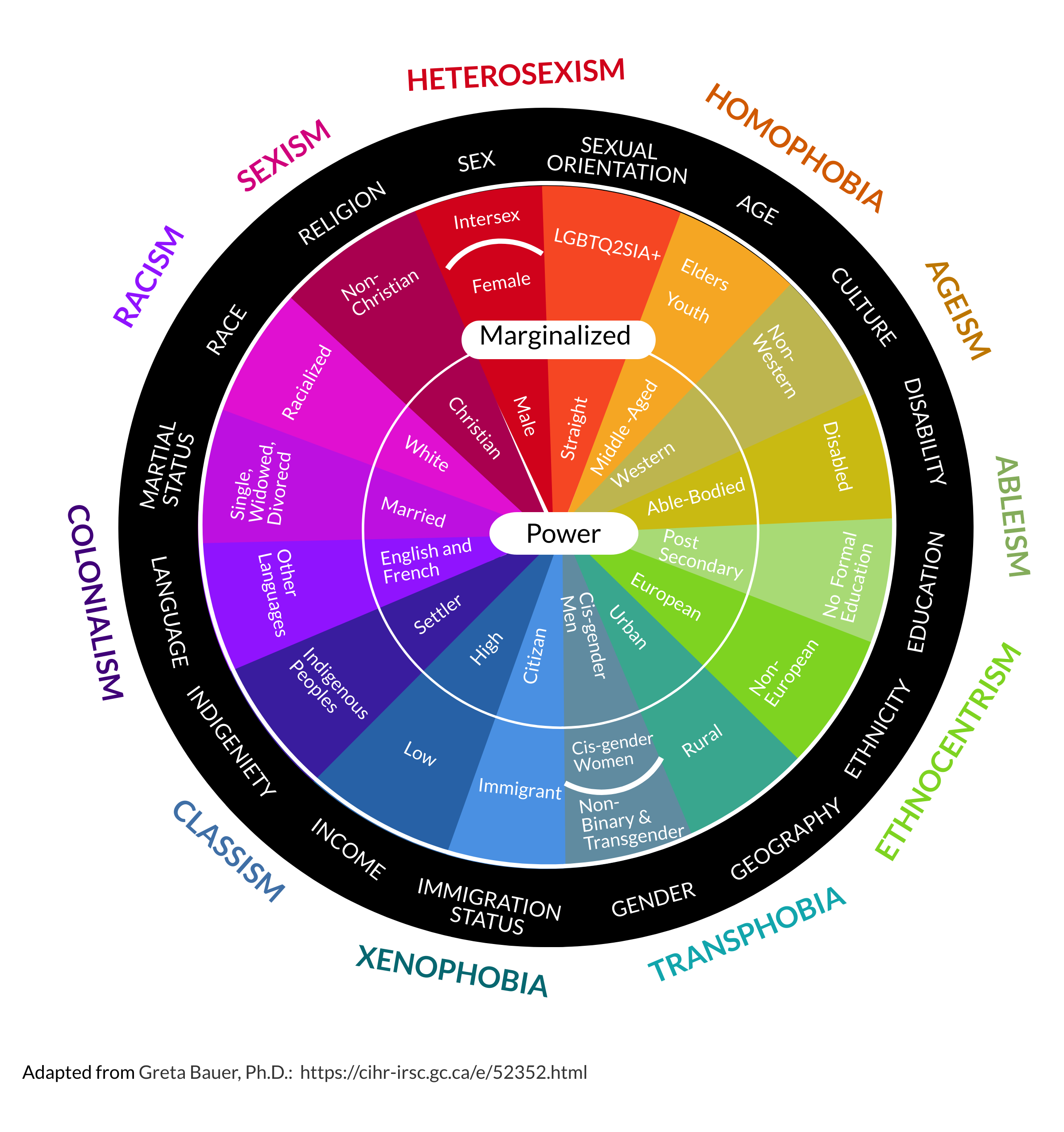Overview: Justice, Equity, Diversity and Inclusion
Justice, Equity, Diversity and Inclusion
In post-secondary institutions, and society at large, there is increasing desire to create more equitable and inclusive spaces and practices. Justice, Equity, Decolonization and Inclusion (JEDI) theories look beyond individualized solutions and ask practitioners to consider systemic or structural barriers that create inequities in classrooms, workplaces, and beyond. Consider the classic (often troubled) image of equality and equity below:

Equality and equity image transcript-1.docx
In the image above, "reality" is depicted where one gets more than what's needed, while the other gets less than what's needed and a large disparity is created. "Equality" is represented where the assumption is that everyone benefits from the same supports. "Equity" is produced when each person gets what they need to see the game. "Justice" is demonstrated when the systemic barrier (the fence) is removed and each person can view the game without supports. It's an imperfect image and metaphor but it is helpful in a basic understanding of what the terms represent.
Equity issues are complex, often requiring attention to context and nuanced analysis, which means that these approaches require a lot of time, patience, and commitment to truly understand and enact. Checklist approaches are often limited in their effectiveness as this kind of work is ongoing and evolving. That said in an effort to make schools and workplaces more inclusive matter, WIL Practitioners must support learning in both spaces.
There are fields that such as sociology, gender, and women's studies that have been examining systemic barriers for decades. Until recently, JEDI awareness and resources specifically for WIL Practitioners have been limited, but some recent WIL provincial projects have been undertaken to contribute to the field and can be accessed on the ACE-WIL Resource Hub.
Supporting community partners and employers in their approaches is also critical. Here are some useful resources from the "Advancing Justice, Equity, Diversity and Inclusion in Work-Integrated Learning: A Toolkit for Employers and Community Partners." See the Toolkit
Below we provide a brief overview of some JEDI concepts and links to some helpful resources. This is a starting point and we encourage you to engage with more advanced readings on these topics. As a reminder, it is against the law to discriminate in employment against people on the basis of 14 “ protected grounds” including age, ancestry, citizenship, colour, creed, disability, ethnic origin, family status, marital status, place of origin, race, record of offenses, sex, and sexual orientation.
Intersectionality
Oftentimes students who experience marginalization encounter barriers to full participation on more than one dimension. This is referred to as intersectionality. It can be tempting to think about inequities happening on individual and group levels, like race or gender. However, inequities are often experienced in intersecting and interlocking ways. Kimberlé Crenshaw (1989) coined the term intersectionality to describe this phenomenon. Please watch the short video below to get an understanding of this important concept.
The visual below is results from Crenshaw's intersectionality and aims to account for the various ways in which identities can compound experiences of marginalization and/or power.

Intersectionality image transcript.docx
Tips and Tools for JEDI Approaches
Because this professional development opportunity is foundational, there are only a few theories covered, which means there are more ways to work towards inclusion, but this is intended to give you, the WIL Practitioner, a good start. While checklist approaches are unlikely to fully address these issues, you may wish to start your inquiry by considering the following questions in a scan of your own WIL programs.
Supporting Students in their WIL Journey transcript.docx